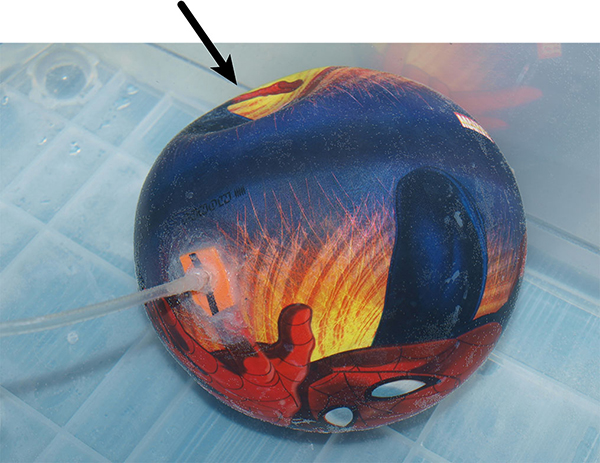EPJ E Highlight - Deflating beach balls and drug delivery
- Details
- Published on 21 October 2019

The deflation of beach balls, squash balls and other common objects offers a good model for distortion in microscopic hollow spheres. This can help us understand the properties of some cells and, potentially, develop new drug delivery mechanisms.
Many natural microscopic objects – red blood cells and pollen grains, for example – take the form of distorted spheres. The distortions can be compared to those observed when a sphere is ‘deflated’; so that it steadily loses internal volume. Until now, most of the work done to understand the physics involved has been theoretical. Now, however, Gwennou Coupier and his colleagues at Grenoble Alps University, France have shown that macroscopic-level models of the properties of these tiny spheres agree very well with this theory. The new study, which has implications for targeted drug delivery, was recently published in EPJ E.
Generically, these microscopic objects share their morphology and several other properties with macroscopic thin, spherical shells. Coupier and his team chose to use macroscopic shells as a model because measuring the volumes of and stresses on microscopic shells is extremely challenging from a technical standpoint. Furthermore, macroscopic shells are commercially and quite affordably available. The researchers set up a model system using hollow balls of different sizes and skin thicknesses, ranging from beach balls to squash balls. They were both filled with and submerged in water, and their morphology was observed and pressures measured as some of the water inside was removed.
The apparatus was both simple – it was designed with the help of undergraduate students – and in some ways rather challenging. A manometer used to measure the pressure of 1 atmosphere (the amount of pressure it takes to cause a squash ball to buckle) required a 10-metre-high tube that could only be set up in the lab staircase. The researchers found that the same generic description of buckling that had been predicted theoretically held true in all the varied ‘real-life’ cases tested beyond the range initially expected.
Coupier has found that deflating and inflating microscopic shells can induce directed motion, which could, for example, be used to help target drug delivery to a tumour. He hopes that this new understanding of the mechanics of deflation might allow this motion to be better controlled.
G. Coupier, A. Djellouli and C. Quilliet (2019), Let’s deflate that beach ball, Eur. Phys. J. E 42:129. DOI 10.1140/epje/i2019-11900-2




